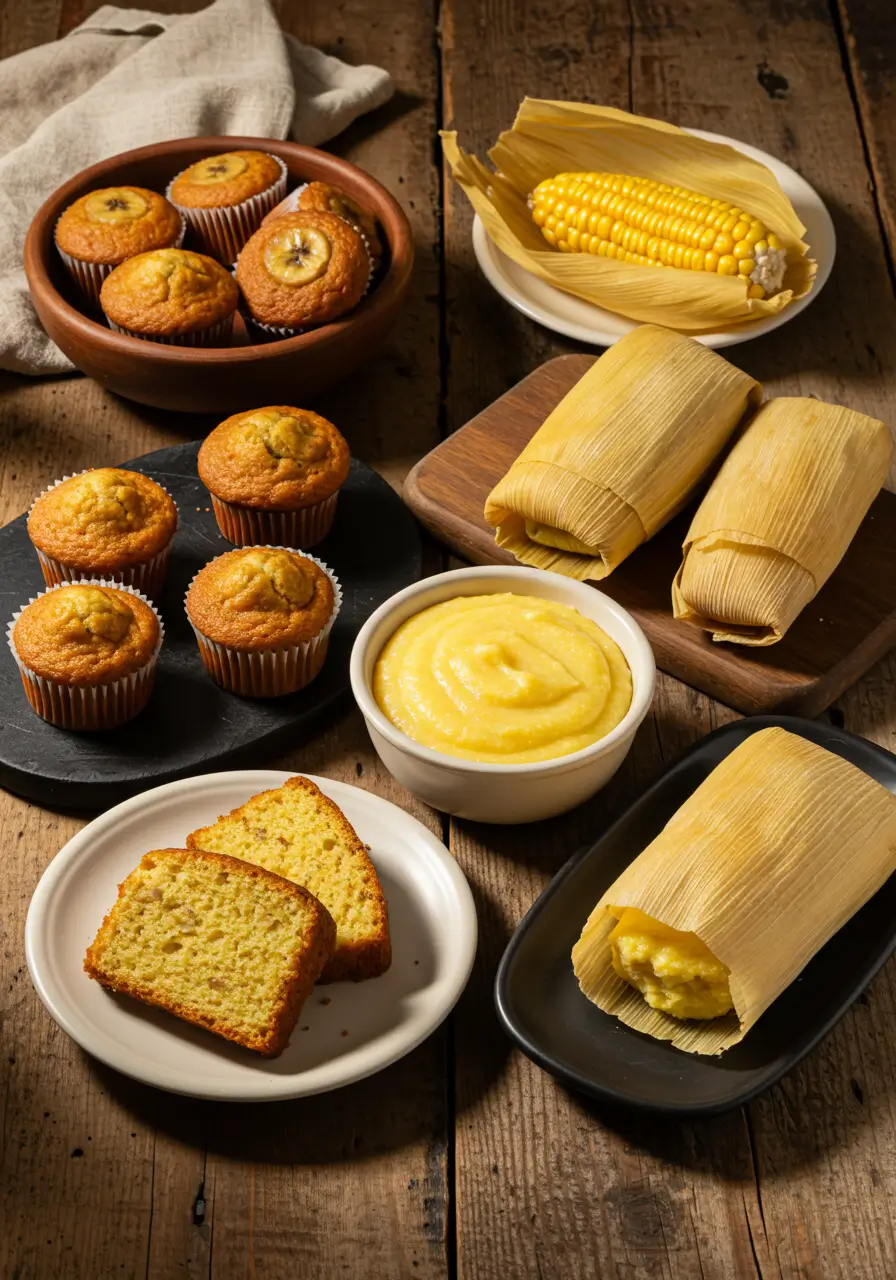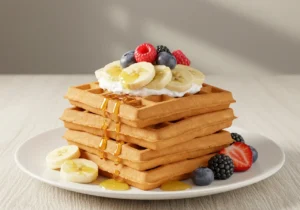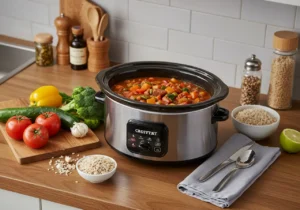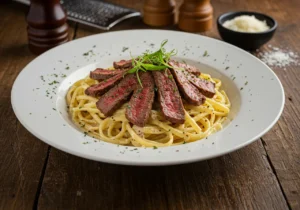Corn flour is more than just a gluten-free alternative—it’s a staple in kitchens around the world. From golden pancakes in the morning to savory breads and sweet treats, corn flour recipes offer a delightful range of dishes that are both tasty and nourishing. In this article, we’ll take a flavorful journey through sweet and savory recipes, dive into international flavors, and uncover tips to help you make the most of this fine, yellow flour.
You’ll discover the difference between corn flour and cornmeal, learn how to cook and bake with it, and get inspired by global recipes like tamales and arepas. Whether you’re new to corn flour or a seasoned pro, you’ll walk away with fresh ideas, clever cooking hacks, and plenty of dishes to try at home. Now, let’s start by understanding the basics before diving into those delicious recipes.
Understanding Corn Flour Recipes and Its Varieties
What is Corn Flour?
So, what exactly is corn flour? In simple terms, corn flour is made by finely grinding whole dried corn kernels. It’s soft, smooth, and powdery, often pale yellow in color. Unlike cornstarch—which is just the starchy part—corn flour contains the entire kernel, making it more nutritious and flavorful.
This flour has been a cornerstone in many traditional cuisines, especially in Latin America and the southern United States. Because it’s gluten-free, it’s a go-to for people with celiac disease or anyone exploring wheat-free baking. Plus, it’s incredibly versatile—you can bake with it, fry with it, or use it to thicken sauces.
Corn Flour vs. Cornmeal: Key Differences
Here’s where it gets a little tricky. People often confuse corn flour recipes with cornmeal. They come from the same source—corn—but the texture sets them apart. Cornmeal is gritty and coarse, while corn flour is finely milled. If you’ve ever had crumbly cornbread, that grainy texture came from cornmeal, not corn flour.
Using one in place of the other doesn’t always work. Cornmeal adds crunch, but corn flour recipes lends a soft, cake-like feel to baked goods. Therefore, understanding the difference helps you choose the right one for your recipe—and trust me, it makes a world of difference in the kitchen.
Nutritional Benefits of Corn Flour
Not only does corn flour make your dishes taste amazing, but it’s also good for you. It’s naturally gluten-free, making it perfect for folks avoiding wheat. It also provides fiber, essential B vitamins, and antioxidants like lutein and zeaxanthin, which support eye health.
On the other hand, it’s not super high in protein, so it’s best paired with other ingredients for a more balanced meal. Still, when used creatively, corn flour recipes can be both hearty and healthy. Add in its low-fat content, and you’ve got yourself a smart pantry staple for guilt-free indulgence.
Continuing our exploration of corn flour recipes, let’s delve into essential cooking tips and a variety of sweet and savory dishes that highlight the versatility of this ingredient.
Essential Tips for Cooking with Corn Flour
Selecting Quality Corn Flour recipes
When it comes to corn flour recipes, the quality of the flour can significantly impact the outcome. Therefore, it’s crucial to choose a product that is fresh and finely milled. Look for corn flour that has a uniform, pale yellow color and a neutral, slightly sweet aroma. Organic and non-GMO options are preferable for those seeking a more natural product. Additionally, purchasing from reputable brands or local mills can ensure higher quality and freshness.
Storage and Shelf Life
Proper storage extends the shelf life of corn flour and maintains its quality. Store it in an airtight container in a cool, dry place away from direct sunlight. This method prevents moisture absorption and deters pests. When stored correctly, corn flour can last up to a year. However, it’s advisable to check for any off smells or discoloration before use, as these can indicate spoilage.
Common Substitutions and Adjustments
In certain recipes, you might need to substitute corn flour due to dietary preferences or availability. While corn flour recipes is naturally gluten-free, some may opt for alternatives like rice flour or potato starch. However, it’s important to note that substitutions can alter the texture and flavor of the final product. Therefore, when experimenting with replacements, consider the specific role corn flour plays in the recipe—whether it’s for thickening, binding, or adding a distinct flavor.
Sweet Corn Flour Recipes to Delight Your Palate
Corn Flour recipes Pancakes
Pancakes made with corn flour offer a delightful twist on the traditional breakfast favorite. They are lighter and have a subtle sweetness that pairs well with various toppings.
Ingredients:
- 1 cup corn flour
- 1/2 cup all-purpose flour (or a gluten-free blend)
- 2 tablespoons sugar
- 1 tablespoon baking powder
- 1/2 teaspoon salt
- 1 cup milk (dairy or plant-based)
- 2 large eggs
- 2 tablespoons melted butter or oil
- 1 teaspoon vanilla extract
Instructions:
- In a large bowl, whisk together the corn flour, all-purpose flour, sugar, baking powder, and salt.
- In a separate bowl, combine the milk, eggs, melted butter, and vanilla extract.
- Gradually add the wet ingredients to the dry ingredients, stirring until just combined. Avoid overmixing to prevent tough pancakes.
- Heat a non-stick skillet or griddle over medium heat and lightly grease it.
- Pour 1/4 cup of batter onto the skillet for each pancake.
- Cook until bubbles form on the surface and the edges look set, about 2-3 minutes. Flip and cook for another 1-2 minutes until golden brown.
- Serve warm with your choice of toppings, such as maple syrup, fresh berries, or a dollop of yogurt.
Honey-Nut Corn Cake
This moist and flavorful cake combines the nutty taste of corn flour recipes with the sweetness of honey, creating a dessert that’s both simple and satisfying.
Ingredients:
- 1 cup corn flour
- 1/2 cup almond flour
- 1 teaspoon baking powder
- 1/4 teaspoon salt
- 1/2 cup unsalted butter, softened
- 1/2 cup honey
- 2 large eggs
- 1 teaspoon vanilla extract
- 1/4 cup milk
- 1/2 cup chopped nuts (such as walnuts or pecans)
Instructions:
- Preheat your oven to 350°F (175°C) and grease an 8-inch round cake pan.
- In a bowl, mix together the corn flour, almond flour, baking powder, and salt.
- In a separate large bowl, cream the softened butter and honey until light and fluffy.
- Beat in the eggs one at a time, then add the vanilla extract.
- Gradually add the dry ingredients to the wet mixture, alternating with the milk, beginning and ending with the dry ingredients. Mix until just combined.
- Fold in the chopped nuts.
- Pour the batter into the prepared cake pan and smooth the top.
- Bake for 25-30 minutes, or until a toothpick inserted into the center comes out clean.
- Allow the cake to cool before slicing. Serve with a drizzle of honey or a sprinkle of powdered sugar if desired.
Corn Flour recipes Cookies
These cookies offer a unique texture and flavor, making them a delightful treat for any occasion.
Ingredients:
- 1 cup corn flour
- 1/2 cup all-purpose flour
- 1/2 teaspoon baking soda
- 1/4 teaspoon salt
- 1/2 cup unsalted butter, softened
- 1/2 cup granulated sugar
Savory Corn Flour Recipes for Every Meal
Corn Flour recipes Flatbreads (Makki di Roti)
Corn flour flatbreads, also known as Makki di Roti, are a classic North Indian dish. They pair beautifully with rich stews and spiced vegetables, especially the popular sarson da saag. Because corn flour recipes lacks gluten, these breads are tender and slightly crumbly, which makes them ideal for scooping up hearty curries.
Ingredients:
- 2 cups corn flour (finely ground)
- 1/4 teaspoon salt
- Warm water, as needed
- Ghee or oil, for cooking
These flatbreads are naturally gluten-free, filling, and rich in flavor. On the other hand, they require a bit of practice to perfect due to the delicate texture of corn flour. However, once mastered, they’re a staple worth keeping on your menu.
Corn Flour recipes Fritters
If you love crispy snacks, corn flour fritters will hit the spot. They’re quick to make, packed with vegetables, and ideal for a savory appetizer or side dish.
Ingredients:
- 1 cup corn flour
- 1/2 cup finely chopped spinach or kale
- 1 small onion, grated
- 1/2 teaspoon cumin seeds
- 1/4 teaspoon turmeric
- Salt and pepper to taste
- Water (as needed to make a thick batter)
- Oil for frying
These fritters are crisp on the outside and soft inside—perfect for snacking or even as part of a brunch spread. In addition, they’re easy to customize with your favorite vegetables or spices.
Savory Corn Flour recipes Porridge
Corn flour recipes isn’t just for baking and frying—you can also make a comforting porridge from it. This dish is popular in many cultures, often eaten for breakfast or as a light lunch.
Ingredients:
- 1/2 cup corn flour
- 2 cups water or vegetable broth
- 1/2 teaspoon salt
- 1/4 teaspoon ground black pepper
- Optional: sautéed garlic, herbs, or cheese for added flavor
Thus, this porridge can be as plain or flavorful as you like. It’s warm, hearty, and incredibly satisfying—especially when topped with roasted vegetables or a poached egg.
Bonus Tip: Add Corn Flour to Savory Batters
Want to level up your crispy coatings? Try mixing a few tablespoons of corn flour into your favorite batters for frying fish, chicken, or tofu. The result? A lighter, crispier finish that locks in moisture.
International Dishes Featuring Corn Flour Recipes
Mexican Tamales
Tamales are a traditional Mexican dish made from masa harina—a type of corn flour treated with lime water. These steamed parcels are filled with various ingredients, wrapped in corn husks, and offer a delightful taste of Mexican cuisine.
Ingredients:
- 2 cups masa harina
- 1 teaspoon baking powder
- 1/2 teaspoon salt
- 1/2 cup vegetable shortening or lard
- 1 1/2 cups chicken or vegetable broth
- 1 cup shredded chicken, or beans (for filling)
- 1 cup salsa or mole sauce
- Dried corn husks, soaked in warm water
Tamales are a festive dish, often prepared during holidays and special occasions. They offer a delicious way to experience the rich flavors of Mexican cuisine.
Italian Polenta
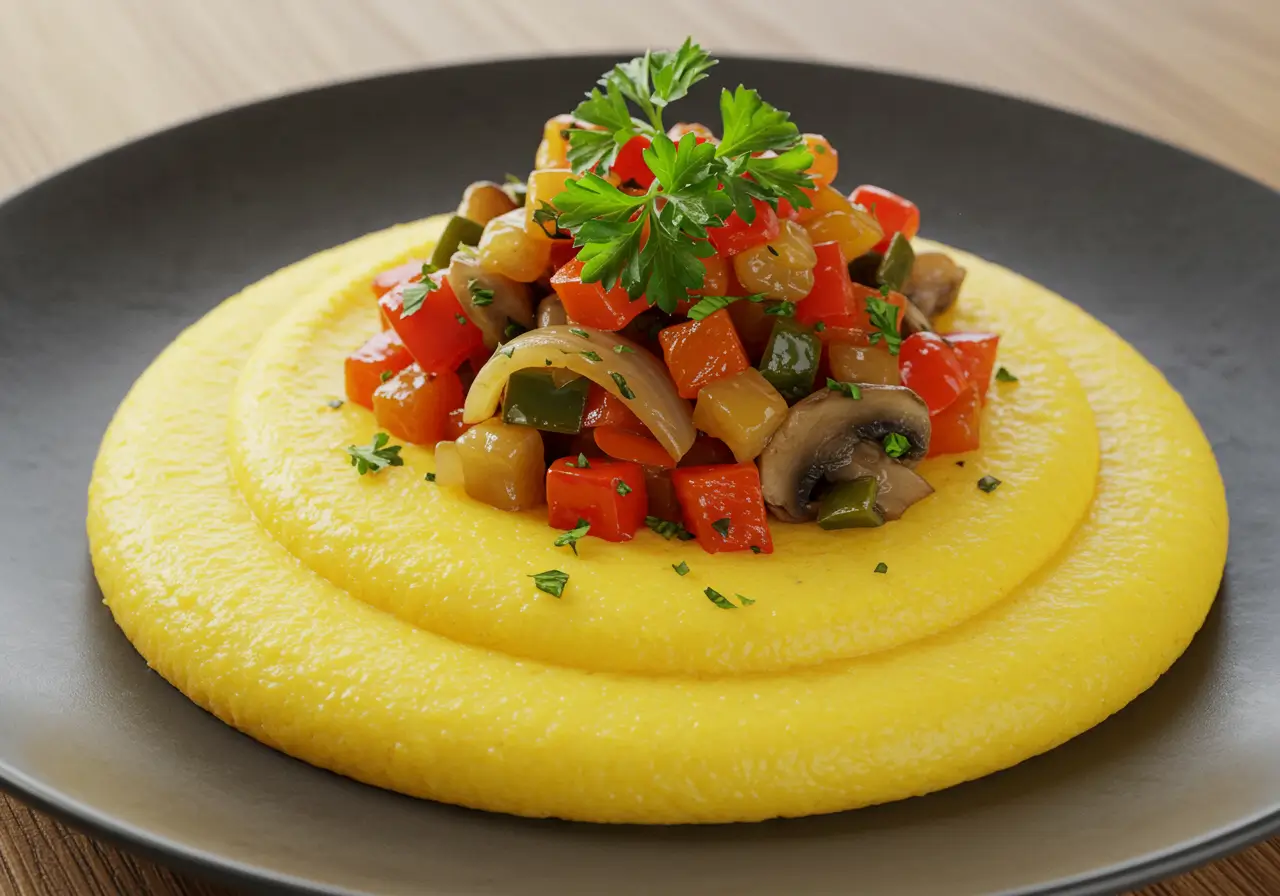
Polenta is a classic Italian dish made from corn flour, offering a creamy base that pairs well with various toppings. It’s a staple in Northern Italy and can be served soft or allowed to set and then grilled or fried.
Ingredients:
- 4 cups water
- 1 teaspoon salt
- 1 cup medium or coarse corn flour
- 2 tablespoons butter
- 1/2 cup grated Parmesan cheese
Polenta showcases the adaptability of corn flour in Italian cooking, providing a comforting and hearty dish.
Venezuelan Arepas
Arepas are a popular Venezuelan and Colombian dish made from pre-cooked corn flour. These versatile corn cakes can be grilled, baked, or fried and filled with a variety of ingredients.
Ingredients:
- 2 cups pre-cooked corn flour (such as P.A.N.)
- 1/2 teaspoon salt
- 2 1/2 cups warm water
- Oil for cooking
Gluten-Free Baking with Corn Flour Recipes
Why Use Corn Flour in Gluten-Free Baking?
Corn flour isn’t just a pantry staple—it’s a gluten-free baker’s secret weapon. Because it’s naturally free from gluten, it works well in recipes for people with celiac disease or those avoiding wheat. However, since corn flour lacks the elasticity of gluten, it’s often used with other gluten-free flours or binders to improve structure and texture.
In addition, corn flour adds a natural sweetness and a beautiful golden hue to baked goods. Its fine texture makes it ideal for tender cakes, cookies, and muffins. It’s particularly great when combined with almond flour, rice flour, or even a touch of tapioca starch to balance its dense quality.
Therefore, when experimenting with corn flour recipes for baking, don’t be afraid to mix and match—it’s all about finding that perfect blend!
Corn Flour Banana Muffins
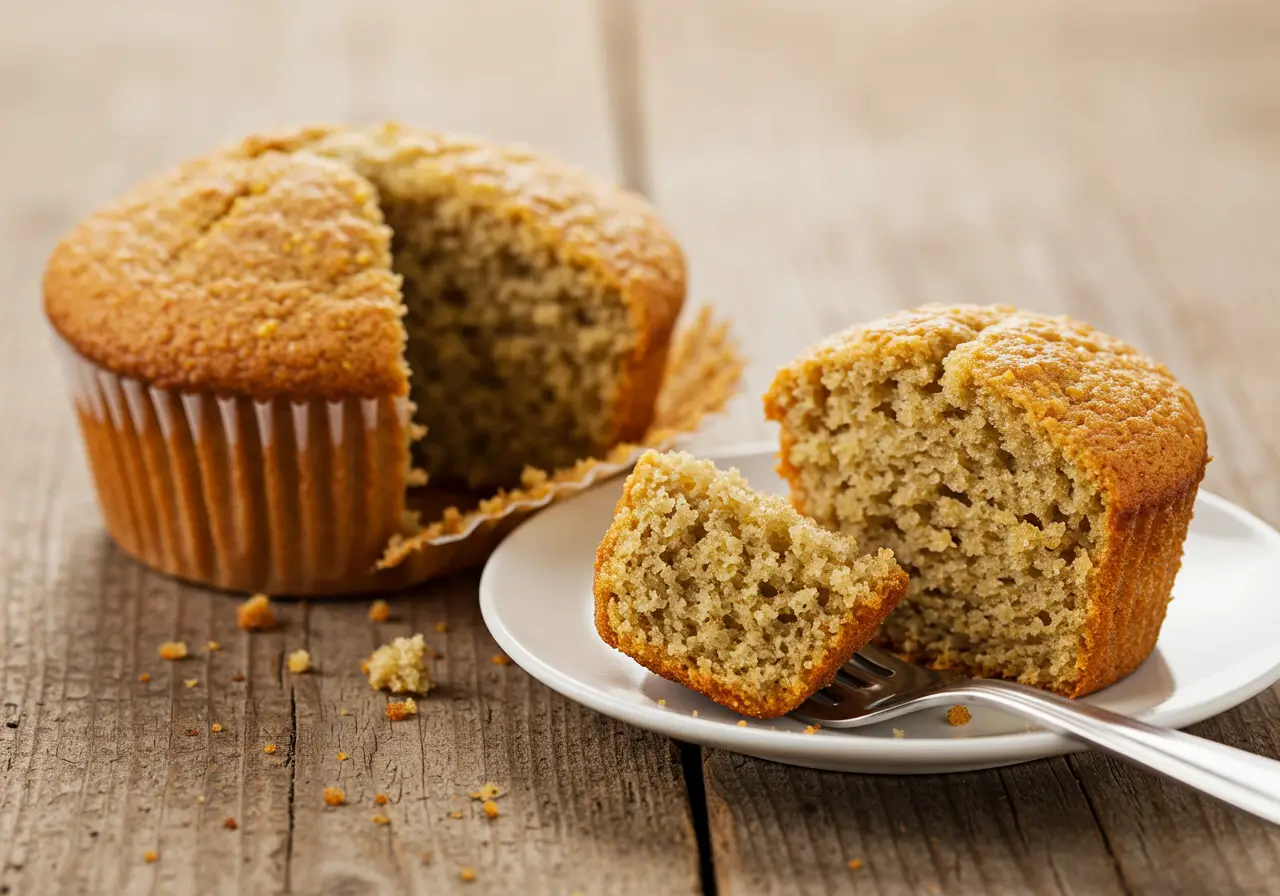
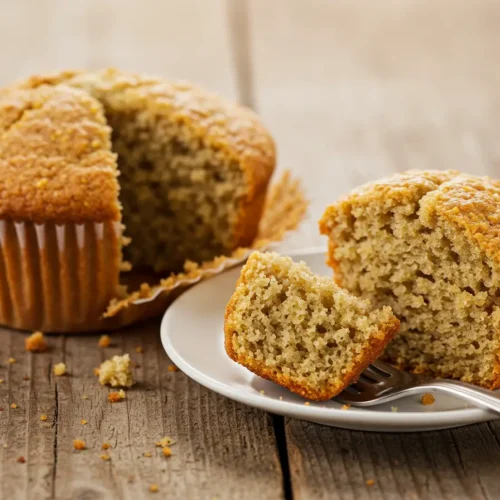
Corn Flour Banana Muffins Recipe Card
Ingredients
- 1 ½ cups corn flour
- 1 tsp baking powder
- ½ tsp baking soda
- ¼ tsp salt
- 2 ripe bananas (mashed)
- ½ cup sugar
- ¼ cup vegetable oil or melted butter
- 2 eggs
- ¼ cup milk (or almond milk)
- ½ tsp vanilla extract
Instructions
- Preheat oven to 350°F (175°C). Line or grease a muffin tin.
- In a bowl, mix corn flour, baking powder, baking soda, and salt.
- In another bowl, whisk mashed bananas, sugar, oil, eggs, milk, and vanilla.
- Combine wet and dry mixtures. Stir until just blended—don’t overmix.
- Pour batter into muffin cups, filling each about ¾ full.
- Bake for 18–22 minutes, or until a toothpick comes out clean.
- Let cool in the pan for 5 minutes, then transfer to a wire rack.
Notes
If you’ve got ripe bananas on the counter, these moist muffins are the perfect way to use them. With corn flour as the base, they’re gluten-free and full of flavor.
These muffins are tender, sweet, and perfect for breakfast or snacks. On the other hand, they’re not overly sweet, so feel free to add chocolate chips or nuts for a richer version.
Gluten-Free Corn Flour Cake
This simple cake is perfect for afternoon tea or dressed up with frosting for a birthday celebration. The corn flour gives it a moist, soft crumb and a sunny yellow color that looks just as good as it tastes.
Ingredients:
- 1 cup corn flour
- 1/2 cup almond flour
- 1 teaspoon baking powder
- 1/4 teaspoon salt
- 1/2 cup sugar
- 1/2 cup butter, softened
- 2 eggs
- 1/2 cup yogurt or sour cream
- Zest of 1 lemon (optional)
Thus, this cake proves that gluten-free doesn’t mean flavor-free. It’s light, buttery, and just sweet enough to satisfy any craving.
For more delicious recipes, check out our Low Histamine Recipes.
Frequently Asked Questions About Corn Flour Recipes
What is corn flour and how is it different from cornstarch?
This is a common point of confusion. Corn flour is made by finely grinding whole corn kernels, which means it contains protein, fiber, and other nutrients. On the other hand, cornstarch is just the starchy part, extracted from the kernel’s endosperm.
Therefore, while both come from corn, they serve different purposes in the kitchen. Corn flour is used in baking and cooking, adding texture and a mild corn flavor, whereas cornstarch is mainly used as a thickener.
Can I use corn flour for baking?
Yes, absolutely! Corn flour recipes are fantastic for gluten-free baking. Since corn flour has no gluten, it won’t provide the same rise or elasticity as wheat flour, but when combined with other flours or binders like eggs, it makes wonderfully tender cakes, muffins, and even cookies.
In addition, corn flour adds a lovely golden color and subtle sweetness to baked goods, making it a favorite in many kitchens.
Is corn flour good for frying?
Definitely. Corn flour works great for frying because it crisps up beautifully without becoming greasy. In fact, many fried recipes—like tempura, onion rings, and even chicken—use corn flour for that light, crispy coating.
Thus, whether you’re making street-style snacks or family favorites, adding corn flour to your batter or dredge makes a noticeable difference.
Is corn flour gluten-free?
Yes, pure corn flour is naturally gluten-free, which makes it perfect for people with gluten sensitivity or celiac disease. However, it’s important to check labels to ensure it hasn’t been processed in a facility that handles wheat.
On the other hand, some corn flour blends may contain added ingredients, so always read the ingredient list to be safe.
How do I store corn flour for long-term use?
To keep your corn flour recipes tasting fresh, proper storage is key. Store corn flour in a sealed container in a cool, dry place. If you live in a humid climate, it’s best to refrigerate or even freeze it to prevent spoilage or pests.
